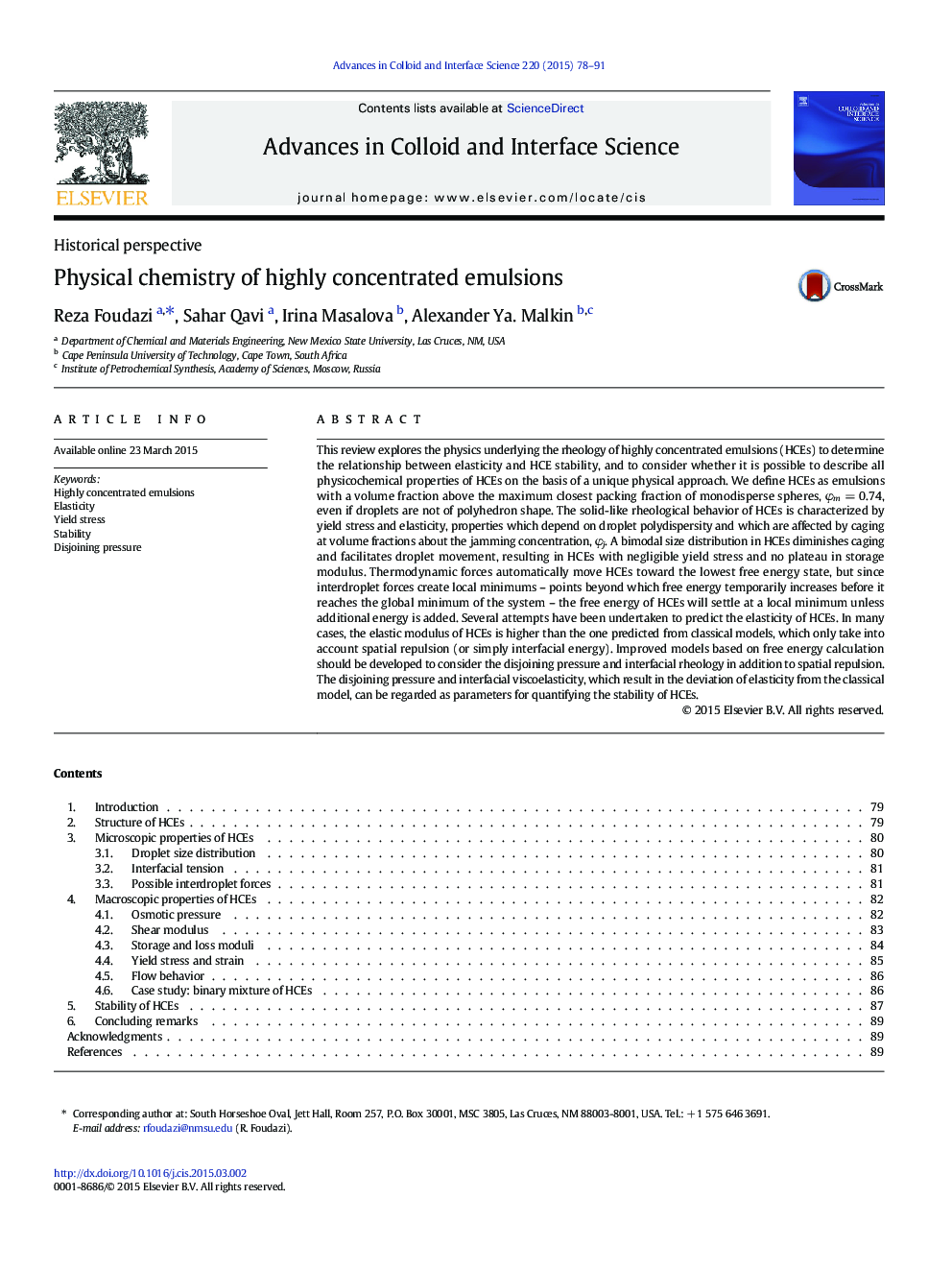| کد مقاله | کد نشریه | سال انتشار | مقاله انگلیسی | نسخه تمام متن |
|---|---|---|---|---|
| 590706 | 1453543 | 2015 | 14 صفحه PDF | دانلود رایگان |
• Disjoining pressure plays a pivotal role in elasticity and stability of HCEs.
• Packing of the droplets induces a significant increase in elasticity of emulsions.
• The controlling parameter of instability in HCEs is the interdroplet forces.
• Rheological properties of interface affect the stability and bulk rheology of HCE.
This review explores the physics underlying the rheology of highly concentrated emulsions (HCEs) to determine the relationship between elasticity and HCE stability, and to consider whether it is possible to describe all physicochemical properties of HCEs on the basis of a unique physical approach. We define HCEs as emulsions with a volume fraction above the maximum closest packing fraction of monodisperse spheres, φm = 0.74, even if droplets are not of polyhedron shape. The solid-like rheological behavior of HCEs is characterized by yield stress and elasticity, properties which depend on droplet polydispersity and which are affected by caging at volume fractions about the jamming concentration, φj. A bimodal size distribution in HCEs diminishes caging and facilitates droplet movement, resulting in HCEs with negligible yield stress and no plateau in storage modulus. Thermodynamic forces automatically move HCEs toward the lowest free energy state, but since interdroplet forces create local minimums – points beyond which free energy temporarily increases before it reaches the global minimum of the system – the free energy of HCEs will settle at a local minimum unless additional energy is added. Several attempts have been undertaken to predict the elasticity of HCEs. In many cases, the elastic modulus of HCEs is higher than the one predicted from classical models, which only take into account spatial repulsion (or simply interfacial energy). Improved models based on free energy calculation should be developed to consider the disjoining pressure and interfacial rheology in addition to spatial repulsion. The disjoining pressure and interfacial viscoelasticity, which result in the deviation of elasticity from the classical model, can be regarded as parameters for quantifying the stability of HCEs.
Figure optionsDownload as PowerPoint slide
Journal: Advances in Colloid and Interface Science - Volume 220, June 2015, Pages 78–91
